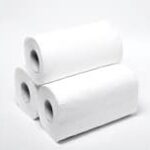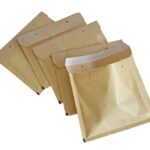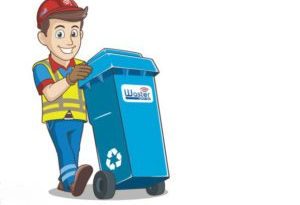Is Silicone Recyclable? ♻️
Energy Disrupter
Is Silicone Recyclable? ♻️: Silicone, if you do not know what it is, is a synthetic polymer made up of mainly silicon and oxygen, which is known as siloxane, and organic compounds like carbon and hydrogen. They can either be rubbery or liquid-like and are used as adhesives, sealants, medicine, and cookware.
Additionally, it has a number of useful properties like being resistant to heat and low toxicity. You can find it in your everyday items like the spatula you use to cook your eggs in the morning. Additionally, you can also find them as computer and phone housings.
But, what can you do about your silicone-based products if it becomes worn out? Or, if you buy new products but do not know where to dispose of the old ones? Can silicone be recycled? Read on to learn more.
>Download Now: Free PDF Business Owners Guide To Commingled Recycling Bin Services
A bit about Waster
Before I discuss whether silicone is recyclable or not, let me share with you more information about Waster.
We here at Waster provide you with innovative solutions for your and your business’s waste management and recycling needs. Furthermore, we provide flexible, 30-day contracts instead of the typical lock-in contracts, which proves to be better.
Click on the blue button to learn more.
READ: State Of Australian Recycling 🗑️
The question is… is silicone recyclable or not?
Take note, silicone (spelled with an “e” at the end of the word) is not the same as silicon (spelled without an “e” at the end of the word). Silicon, which makes up silica (an earth substance), is only a part of the silicone material. Now that I have got that out of the way, let me talk about silicone recycling. First of all, many of us will agree on silicone’s versatility; one website even called it the “new plastic”. Not only does it have plastic’s flexibility and durability, but it also differs from plastic in its toxicity; silicone is not toxic, unlike plastic.
And, also like plastic, silicone is recyclable. In the US, they are collected and de-polymerised to recover silicone monomers like D3 and D4. The monomers are then manufactured to produce silicone oil, a widely used lubricant for machinery in the industries. Additionally, there are also recycling facilities in the UK that treat silicone. In other words, you can recycle silicone in the UK, as well.
But, as of now, there are very few – or almost non-existent – recycling facilities here in Australia that collect recyclable silicone. The reason for this is because of its expensiveness; scientists have already come up with techniques, but such techniques require the use of so much energy to break down the substance. However, you can still contact your local council and see if they accept silicone for recycling.
Try recycling silicone at home
Even with the vast unavailability of silicone recycling in Australia, you can still technically try to recycle them yourself. An example of this is recycling cookware with silicone material; you can expect three things when you try to recycle your silicone:
- It saves you money.
- Recycling silicone lets you reuse products.
- It helps save the environment.
Here is how you can recycle your silicone at your own home:
1. Get your recycling equipment ready
One can take advantage of the recyclable silicone and do the process in their home. The first step is to get on your working gear and search for basic pieces of equipment to process the silicone. Fortunately, you do not need expensive tools to recycle silicone.
Remember, doing this procedure is messy. While doing this, you can put everything you use in the recycling process under a cloth. This is to contain the silicone flakes and prevent them from making their way to your important supplies like water when washing. In the next step, I will discuss what you might need.
2. Pulverise silicone for recycling
The second step you need to do after gathering your equipment is to shred or grind down the silicone into small, fine pieces. No need for complicated tools, you can use scissors, a knife, or a blade, instead. Furthermore, if large amounts are present, you can opt to shred it to pieces using a grinder, if you have one available at your home. Soft, flexible silicone and hard silicone can both be recycled with the use of a grinder. And, for you to get a finer silicone granule, drop them in the grinder again.
3. Prepare a container to shape the recycled silicone
After grinding them down, prepare a mould where you can shape your recycled silicone. According to ecousarecycling, you can use recycled silicone to make a new mould for many purposes like cooking, cake decorating, construction moulds, and casting moulds. This all depends on the type of mould you use; you can shape it into something you wish to.
4. Mix the recycled silicone with virgin silicone
Now that you have the ground silicone and mould in your hands, you should mix the recycled silicone with the fresh, new silicone. Fresh, new silicone is available in either powder form as well liquid form. But, you need to turn it into a solid state before you mix the fresh silicone with the recyclable silicone.
What you need to do first is to treat it; what I mean by treating it is by catalysing, vulcanising, or injecting it on moulding recycled silicone are some ways you can turn it into a solid.
Additionally, you can also buy silicone moulding kits for the newbies who want to practise silicone recycling.
[embedded content]
[embedded content]
Is silicone recyclable? We conclude that…
I hope that by reading this, you now know the answer to your questions such as “how to recycled silicone products”, “where to recycle silicone”, or “Can you recycle silicone rubber”. But, let me recap for you:
Although silicone is indeed recyclable, there are very few facilities that handle such materials. It is best to contact your local council first before throwing it in the curbside recycling bin.
Waster: things you need to know
If you’re looking for recycling bins, check our waste recycling shop and find the best deals in terms of pricing and services.
Also, please call 1300 WASTER (1300 927 837), or email us at [email protected] if you have any further questions.
















